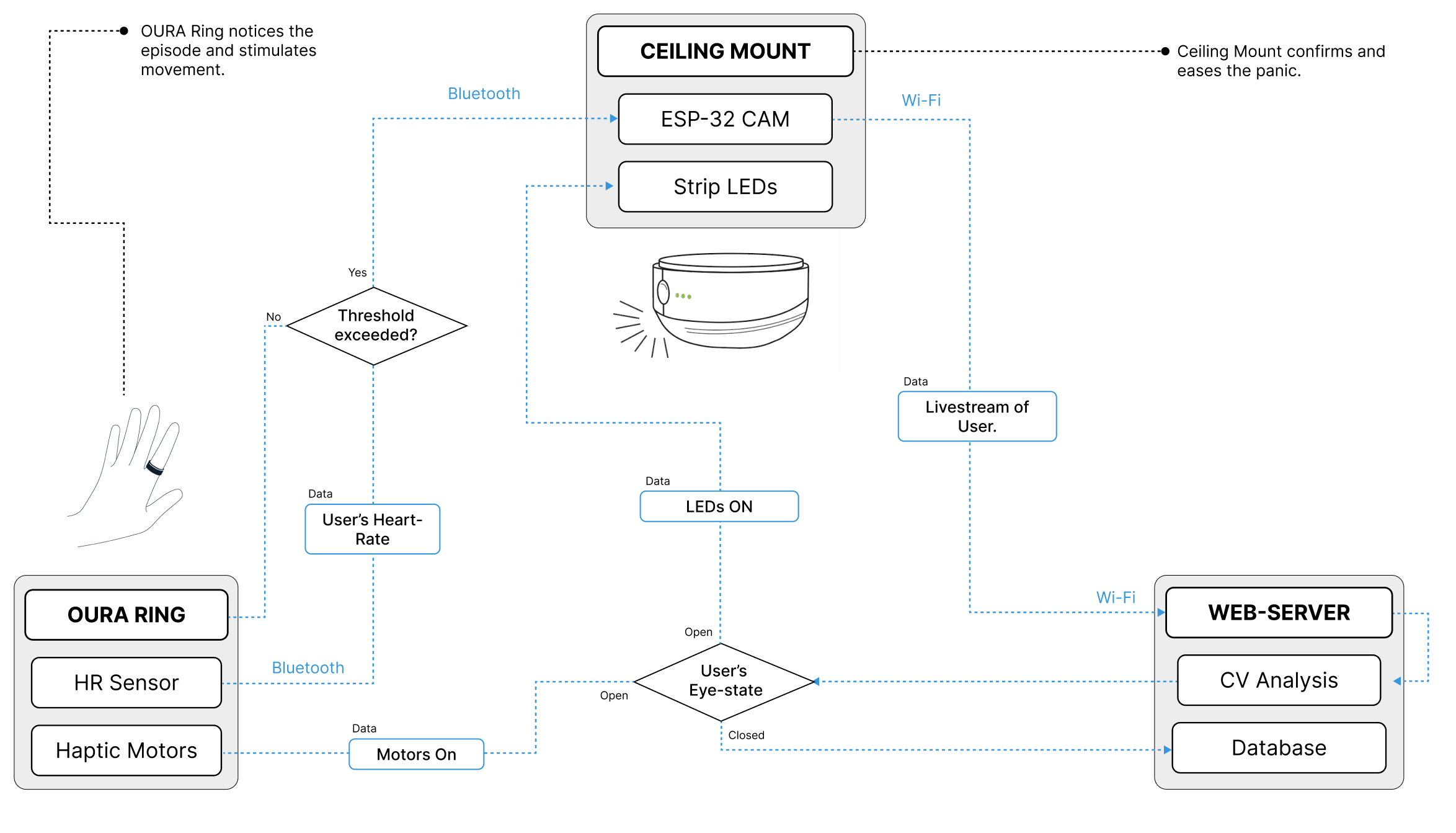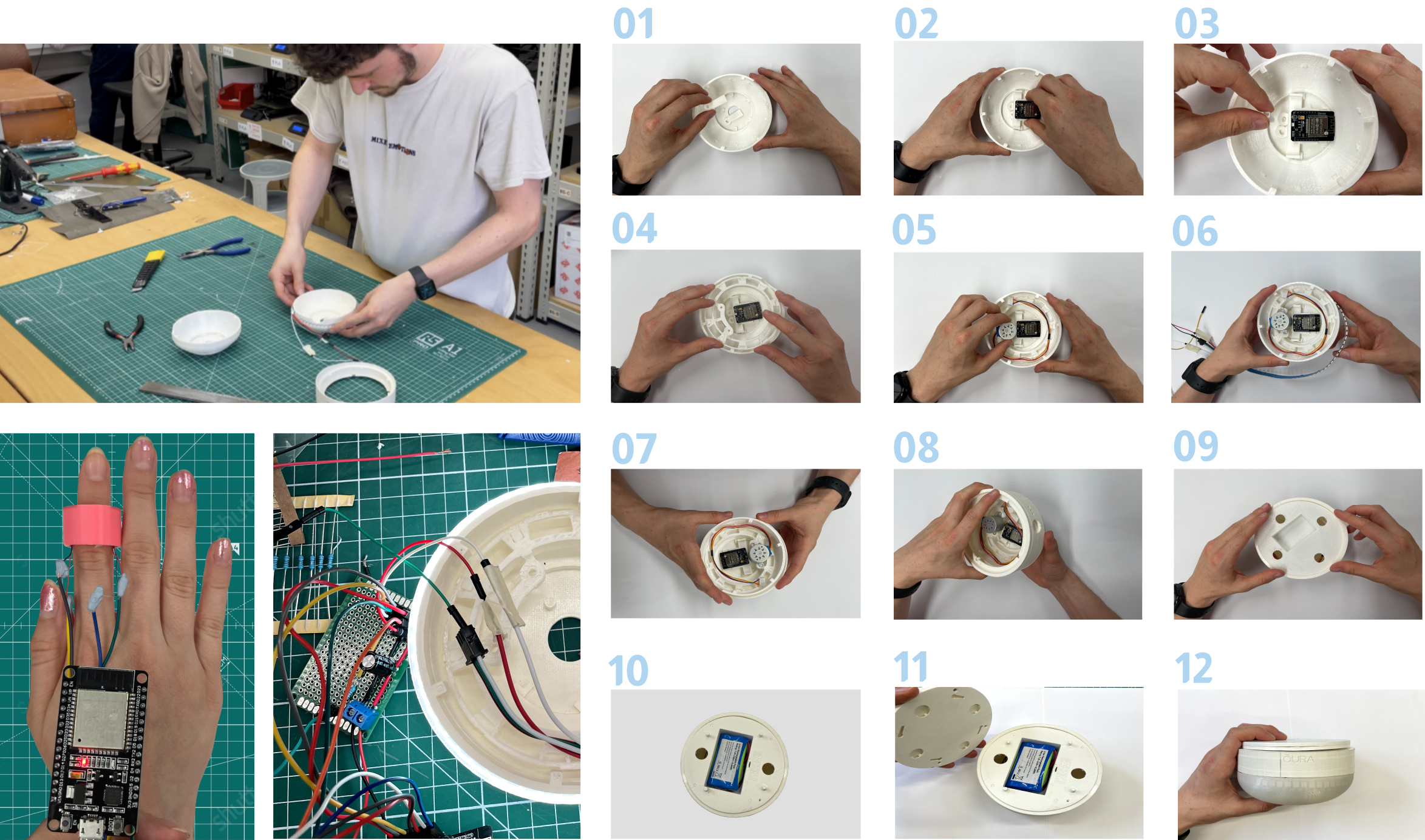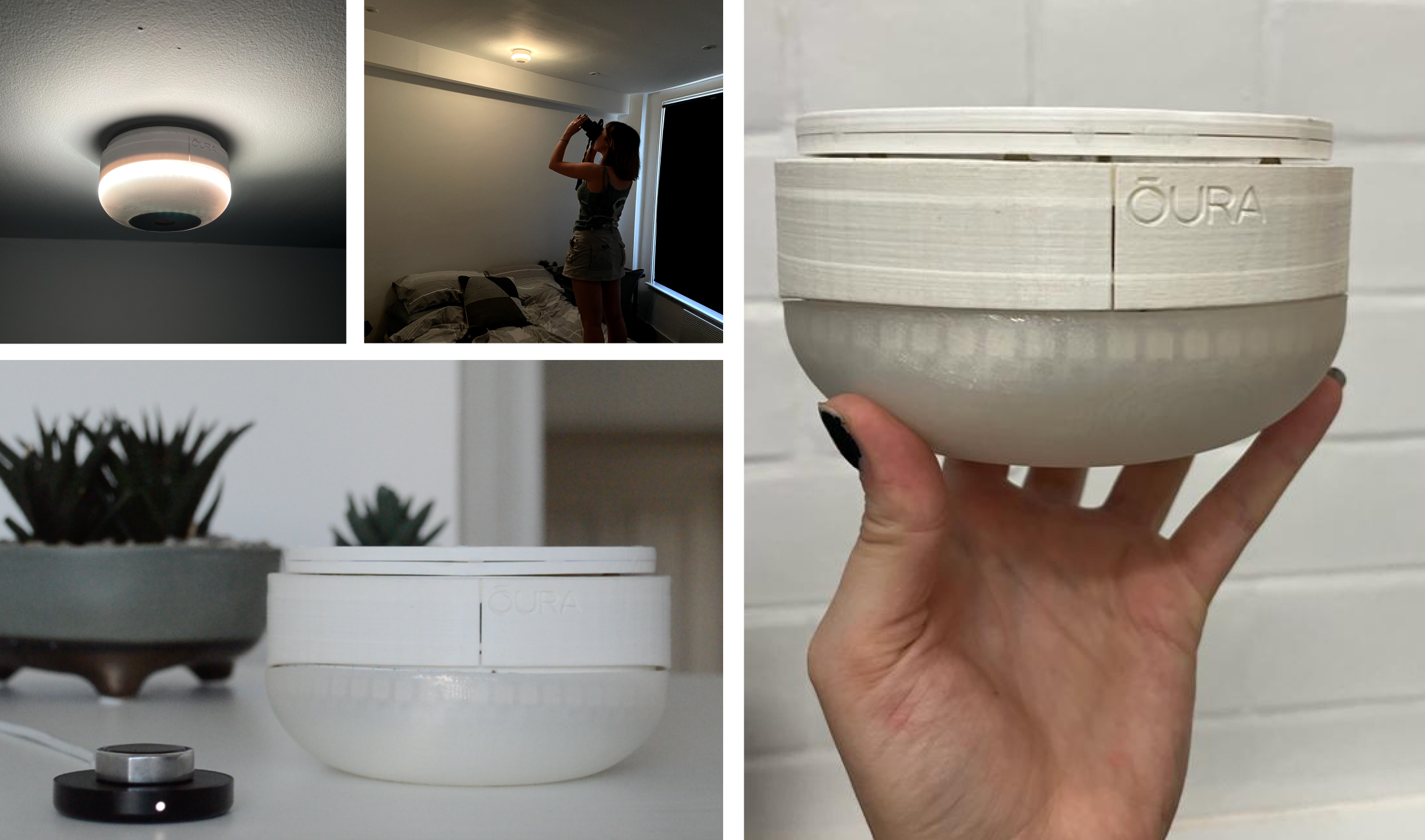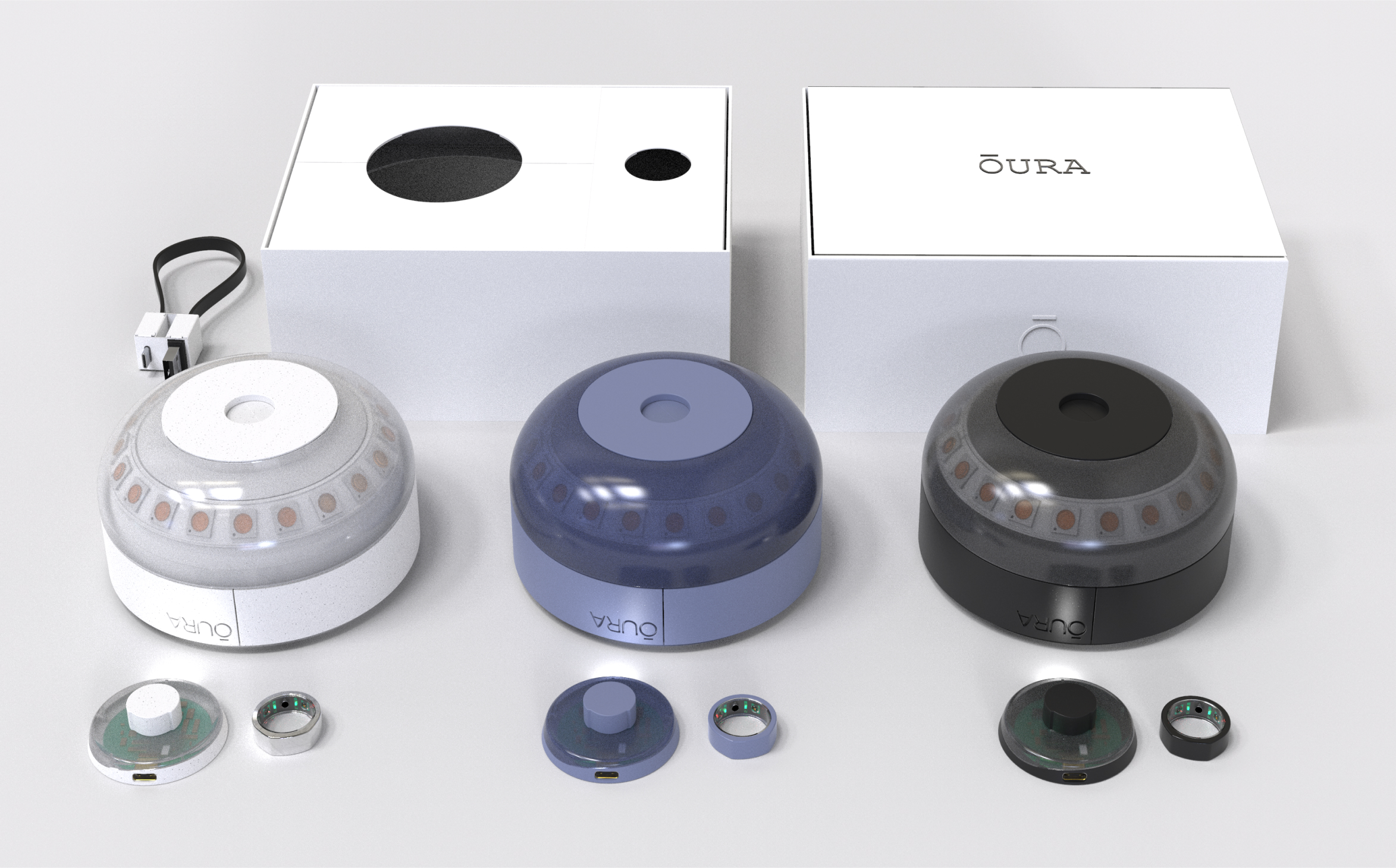
OURA Rise
Description:
A first-of-its-kind IOT intervention to aid sufferers of sleep paralysis. NB: Oura were not involved with the development of this device.
Collaborators:
Skills explored:
Completed:
Jan-Jun 2022
What is sleep paralysis?
Sleep paralysis is a phenomenon where a person is temporarily unable to move or speak while falling asleep or waking up. During an episode of sleep paralysis, the individual is conscious but experiences a sense of immobility. It can be accompanied by vivid hallucinations and a feeling of pressure on the chest. These episodes typically last from a few seconds to a couple of minutes and can be very traumatic. Currently, there are no known effective cures for this condition, therefore we wanted to create a device that monitored and assisted sufferers of sleep paralysis.
Introducing OURA Rise
OURA Rise is a two-part IoT system including a ceiling mounted device that is wirelessly linked to the OURA Gen 4 Ring. Through computer vision and high accuracy heart rate monitors, OURA Rise is able to identify when a user is experiencing a sleep paralysis episode and effectively bring them out of the unpleasant state. This was achieved after identifying and researching into three intervention opportunities.

Three identified opportunities...

OPEN EYES - During an episode of sleep paralysis, the user is able to open and move their eyes around even though the rest of their body is paralysed. This can help distinguish between someone sleeping normally, and someone experiencing an episode.

RAISED HEARTBEAT - Due to the traumatic nature of sleep paralysis, many sufferers begin to panic during the episodes. This results in a raised heartbeat, forming another indication of sleep paralysis taking place.

SLEEPING POSITION - Research shows how sufferers of sleep paralysis often experience episodes when they are sleeping on their back and facing upwards. This provided an opportunity of thinking about where we could position the detection device to monitor the user accurately.
The System
Through taking advantage of the three identified opportunities, we devised an IoT intervention that could effectively identify, track and relieve episodes of sleep paralysis. The simplified 3-part system diagram is found below.

#1 Ceiling Mount
The purpose of the ceiling mount is to determine whether the user is experiencing a bad-dream or a sleep paralysis episode. This is achieved through a ceiling mounted camera that users computer vision to determine whether the user's eyes are open or closed, thus providing the appropriate indication. The ceiling mount only captures the user's eye-state once the OURA Ring has detected a raise in heartrate.

#2 OURA Ring
The OURA Ring sub-system was designed to fit in with existing components on the commercially available version. The heart rate sensor sends a bluetooth signal to the ceiling mount once an abnormally large heart rate change is measured. Once verified as sleep paralysis, the ceiling mount then sends a bluetooth signal back to the ring to stimulate movement through haptic feedback.
Functional Prototyping
In order to prove the concept, a fabricated prototype was constructed. This featured a network of ESP32 Microcontrollers that wirelessly communicated to emulate the components of the OURA Rise system. For the OURA Ring, bluetooth communication allowed for the Heartrate Sensor to alert the Ceiling Mount once the user's heart rate had risen above a threshold. Once alerted, the Ceiling Mount would send a livestream to a web-server that carried out computer vision analysis on the stream and determined whether the user is categorically experiencing a sleep paralysis episode. The electronics were encased in a high-fidelity prototype of the Ceiling Mount, this could be constructed in 12 assembly steps.

Eye Detection Software
The webserver allowed for the stream of the user sleeping to be analysed. I developed a Python script that ran on an AWS EC2 Instance to regularly check the stream. Python's OpenCV Library was used to apply a face mesh to the user, and specific nodes were selected to identify the user's eye. The ratio between the horizontal and vertical distance of the eye was then used to determine whether the eye was open or closed.
Contextual Testing
Once the prototype had been built, we tested the system in the context of the user's bedroom in order to help identify any improvements that we could make to the device. The project was deemed effective and ultimately resulted in OURA Rise winning the DESIRE Award 2022.





